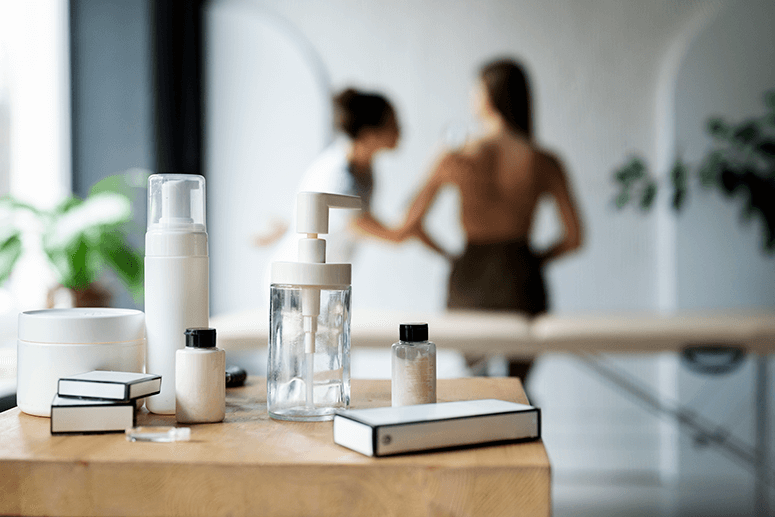Acne is more than just a skin rash
Acne is often dismissed as a superficial issue, a rite of passage for most parents of teenagers, or an inconvenience for adults. However, the reality is far more complex. Acne is not just a skin rash, it can have intense emotional and psychological consequences, including an increased risk of hopelessness and dejection. Understanding the link between acne and the influencing factors like mental health is crucial for providing holistic care among those affected.
The influencing factors in acne are classified into four major categories. The first one includes individual socio-economic and biological factors—for example, gender, age, economic level, heredity, obesity, skin type, menstrual cycle (for females), diet, smoking, cosmetics products, electronic products, sleep quality, and psychological factors. The second group includes natural environmental factors such as temperature, humidity, sun exposure, air pollution, and chloracne. The third relates to social environment, including social networks and social media. The last category includes built environmental factors—for example, population density, food stores, green spaces, as well as other built environment characteristics for transport.

Individual’s socio-economic and biological factors. With the rapid urbanization process, there are large-scale migrating and aging populations, changes in dietary structure and lifestyle, and social inequality, leading to a high incidence of chronic diseases like acne.
Gender. Differences in endocrine levels between genders result in differences in the prevalence of acne. Studies indicate that more males than females suffer from acne during adolescence and more females than males suffer from acne during post-adolescence.
Age. The epidemiology of acne continues to evolve with changes in hormone levels that vary with age. Studies confirmed that acne was more common during adolescence.
Economic level. There were differences in the medical services enjoyed by patients at different economic levels, which might affect the prevalence of acne. Dreno et al. found acne patients were more likely to live in urban areas with high socio-economic status—the reason is probably because they have more access to dermatologists.
Heredity. Heredity plays a dominant role in the occurrence of acne, especially in severe acne with nodules, cysts, and scars. An epidemiological study in Iran showed that a mother with acne history had the greatest impact on acne severity of the next generation.
Overweight and obesity. Increased secretion of the insulin-like growth factors−1 (IGF-1) in the body and insulin resistance are possible mechanisms by which obesity affects the occurrence of acne. In insulin resistance, decreased sensitivity leads to more increased insulin release, which in turn leads to increased production of IGF-1, leading to more acne and obesity.
Skin type. The epidemiology found that oily skin and mixed-type skin were risk factors to acne.
Menstrual cycle (for females). Acne in women is frequently associated with hormonal derangement, including hyperandrogenism. Shrestha et al. showed that hormonal alteration in females with adult acne had significant association with irregular menstruation. Wei et al. indicated dysmenorrhea was a risk factor to the acne sufferers. Therefore, dermatologists should consider hormonal alterations in acne patients with irregular menstruation.

Diet. This is a hot topic at present. Many studies have confirmed that a high-sugar diet and dairy products are risk factors for acne. Increased sugar intake (≥100g/d), frequent intake (≥7 times per week) of soft drinks (such as carbonated sodas, sweetened tea drinks and fruit-flavored drinks), and daily consumption of dark chocolate were positively associated with acne. A high glycemic load diet can lead to the rise in blood glucose in the body; therefore, islets secrete large amounts of insulin to lower blood glucose, and elevated insulin levels lead to increased secretion of insulin-like growth factor (IGF-1). IGF-1 can increase androgen levels, promote sebum secretion and hyperkeratosis of sebaceous glands to affect lipid excretion, thereby inducing or aggravating the occurrence of acne. Also, studies show a positive association between the incidence of acne and the intake of whole milk and skim milk. Milk can also increase the level of IGF-1, which can lead to acne. In addition, acne can be caused by greasy, fatty foods, due to the fact that the release of free fatty acids triglycerides under the action of P. acnes could promote the development of acne.
Smoking. This needs more studies to confirm its effect on acne.
Cosmetics. Improper use of skincare practices (such as essential oils or too-oily substrates, makeup, excessive cleansing of the skin and soaps with pH 8.0) can modify skin barrier function and skin sebum areas, especially the microbiome balance, thereby activating innate immunity to trigger inflammation and more severe acne.

Electronic products. Visible light emitted by electronic products is a risk factor for acne. Taheri et al. found exposure to short-wavelength visible light emitted from smartphones and tablets could increase the proliferation of Staphylococcus aureus, which could give a rise to an increased incidence of acne. Dreno et al. showed people who were exposed to screens and tablets before falling asleep were more likely to have acne.
Quality of sleep. Good sleep is essential to good health and great skin.
Psychological factors. Dreno et al. indicated individuals with acne suffered from significantly higher stress levels than acne-free individuals.
Temperature and humidity. Acne occurrence was significantly more frequent in hot or humid regions. According to Williams et al., sebum excretion rate increased by 10% for every 1C increase in temperature. A recent study also showed hot environments caused more production of sebum secretion, especially on the forehead. Increased sebum excretion might cause acne to worsen.
Sun exposure. Dreno et al. found acne was significantly more frequent in individuals with moderate or intensive sun exposure due to their work or daily activities. Lee et al. showed ultraviolet B irradiation increased the expression of inflammatory cytokines in cultured sebocytes.
Air pollution. Clinical studies reported that air pollutants had a deleterious effect on the skin by increasing oxidative stress, leading to severe change of lipids, deoxyribonucleic acid and/or proteins in the human skin. Two clinical studies comparing subjects in the highly polluted areas to those in the less polluted areas in Shanghai and Mexico discovered that skin quality declined with chronic exposure to ambient air pollution.
Mineral oils or halogenated hydrocarbons. Chloracne, also known as occupational acne, is a special type of acne caused by exposure to mineral oils or certain halogenated hydrocarbons in production labor. Dreno et al. found that the vast majority of people with acne were significantly more exposed to tar, solvent emanation and crude oil or oil emanation than people without acne. Therefore, an effective way to prevent chloracne is to avoid contact with halogenated hydrocarbons.
Social network. There are a growing number of studies demonstrating that social networks could exert impacts on psychology and behavior, such as depression, anxiety, smoking, drinking, and aggression. In previous studies, obesity, anxiety, depression, and smoking were identified as the risk factors for acne.
Social media. With the rapid advancement of novel technology, social media has made it convenient for patients to communicate their skin diseases, share treatment and skin care, and even get access to information on their illness. According to Borba et al., the videos on acne education that viewers seek online are clearly inaccurate and poor in quality. The incorrect or irregular treatment suggested on social media may contribute to the aggravation of acne.
Built environmental factors. The impact of built environment on acne has yet to be reported in studies. Physiological factors, lifestyle, psychological factors, as well as population density, food stores, green space (a house with a lot of garden and greenery creates a happy environment; thus, very good for acne-prone individuals), climate, pollution status, and so on, in relation to the residence of patients with acne, in combination with traditional research factors.



